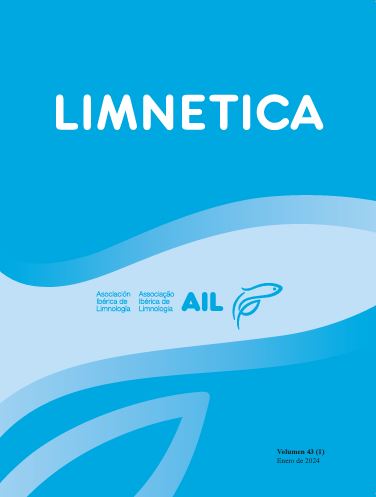Benthic macroinvertebrates community structure and physicochemical characteristics at Lauca River Basin high altitude wetlands. Altiplano, Chile.
Résumé
High Andean freshwater ecosystems are highly threatened by factors such as water availability, species invasion, and global climate change, so generating knowledge about their ecological characteristics is extremely important for making conservation decisions.The seasonal variation and relationship of physicochemical variables and the structure and composition of the macroinvertebrate community in aquatic ecosystems was analyzed. In this work, macroinvertebrate and water samples were taken from lentic and lotic ecosystems in the Lauca river basin in the Chilean highlands. The results showed a wide variation in the physicochemical variables between sites and that the main differences found in the biotic community are at the microscale level where the factors of "site" (ANOSIM global R=0.64, p=0.001) and "type of ecosystem" (ANOSIM global R=0.31, p=0.02) are more relevant than "seasonality"(ANOSIM global R=-0.003, p=0.47). The physicochemical results show Nitrogen compounds like N-Kjeldahl (p-value = 0.004), Nitrite (p-value = 0.004), Nitrate (p-value = 0.022), are the ones that most contribute to the spatial differentiation observed between sites. These results are consistent with a marked variability between high Andean ecosystems, which maintain unique environmental conditions that can be reflected in the macroinvertebrate community that inhabit them.
Téléchargements
Publié-e
Numéro
Rubrique
Licence
Los autores que publican en esta revista están de acuerdo con los siguientes términos:
- Limnetica está bajo una licencia de Creative Commons Atribución-NoComercial 4.0 Internacional.
b. Los autores pueden establecer por separado acuerdos adicionales para la distribución no exclusiva de la versión de la obra publicada en la revista (por ejemplo, situarlo en un repositorio institucional o publicarlo en un libro), con un reconocimiento de su publicación inicial en esta revista.
c. Se permite y se anima a los autores a difundir sus trabajos electrónicamente (por ejemplo, en repositorios institucionales o en su propio sitio web) antes y durante el proceso de envío, ya que puede dar lugar a intercambios productivos, así como a una citación más temprana y mayor de los trabajos publicados (Véase The Effect of Open Access) (en inglés).


